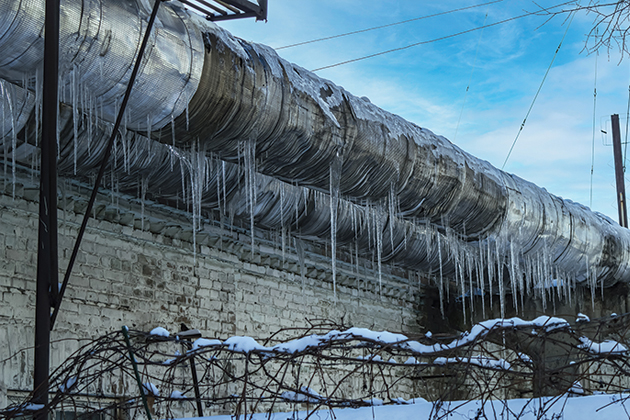
With winter quickly approaching, organizations should take steps now to prepare for cold stress and weather-related risks from heavy snow, ice, high winds and frigid temperatures. The potential impact of winter weather can be severe—the 2022-2023 season alone saw two separate billion-dollar weather events in the United States with combined damages of over $10 billion. The following considerations can help ensure your organization is prepared and protected in the months to come:
Establishing a Cold Weather Plan
In today’s changing climate, weather is increasingly unpredictable. Many utilities, especially those in southern regions, are not designed for extreme cold exposures. Even sites and facilities that operate in climates where cold is expected require extra precautions and planning to reduce damage to utility and fire protection systems.
To mitigate some of these risks, establish a cold weather safety plan outlining precautions to take before, during and after the onset of freezing temperatures. A cold weather safety plan should identify designated personnel and the associated responsibilities that need to be implemented in preparation for and during extreme winter weather conditions. The plan should also designate an employee who will be responsible for monitoring extreme weather conditions and leading the execution of safety program elements. Checklists developed specifically for each operation, department and location can help ensure the safety program is successfully implemented.
Keep in mind that the best time to review policies for winter weather is before the first winter storm. Review contracts for services like snow removal to optimize risk transfer opportunities. Inspect life safety equipment such as generators, fire pumps and sprinkler systems and review your water intrusion plan to minimize damage in the event of a pipe burst, roof leak, flood or other water-related accidents. Additionally, make contact information readily available for heating, plumbing, snow removal, sprinkler systems, alarms and any other contractors potentially needed during the winter months. Ensure that all relevant policies and plans are clearly posted or available to employees and tenants.
Protecting Property and People
Frost and freeze prevention plans are essential to keep the water inside of pipes flowing and fire protection systems active. Winterize water systems and ensure that exposed plumbing is properly drained. Check building heating systems to ensure all areas with plumbing will remain above 40° F (4° C) and, if applicable, confirm that dry pipe sprinkler system control valves and piping are in a heated enclosure. Additionally, ensure you maintain clear access to fire hydrants, sprinkler system rooms and life safety equipment.
It is also important to inspect the roofs of your facilities, make any necessary repairs and confirm drains and gutters are clear and that water can flow freely through them. Whether from a single weather event or multiple events, when the weight of snow and ice exceeds the roof system’s designed load limit, damage or collapse may occur. Property owners and managers therefore need to monitor snow accumulation and take appropriate measures if snow threatens to exceed the roof’s capacity. When heavy snow is forecast, it may be a good idea to remove old snow from the roof before more falls. If it is possible to do safely, consider periodically removing snow during the storm as well. It is usually not necessary to remove all snow from the roof to reduce loading to a safe level. In fact, leaving a small layer of snow reduces the risk of damaging the roof surface by shoveling or raking.
Snow and ice can create hazardous conditions that lead to injuries and accidents. Monitor your facility for blocked doors and icy sidewalks and ensure all fire exits are kept clear, especially in the event of snow and ice accumulation. To prevent slips, trips and falls, ensure that you have adequate supplies of ice melt for walkways and entrances, and inspect your snow removal equipment to verify it is in proper operating condition. Provide adequate floor mat coverage at entrances and wet floor signs when necessary, and ensure that entrances and parking areas are well-lit. Be sure to inspect parking lot and sidewalk areas frequently during and after snow and ice events and address any unsafe conditions.
If employees perform snow removal, provide ergonomically designed shovels as well as insulated hats, handwear, coats, boots and other personal protective equipment for workers exposed to cold weather. In addition, review emergency evacuation procedures to ensure that snow, ice and cold weather conditions are adequately addressed and then make sure your employees are aware of those procedures.
For companies with vehicle fleets, have a mechanic inspect vehicles to ensure they are in good operating condition and prepared for winter weather with properly inflated tires, adequate fluid levels and working safety features. Companies should also develop winter driving policies and training materials to help keep employees safe when operating vehicles in hazardous conditions and, if possible, advise them to avoid driving until the roadways are clear of snow and ice.
From facilities management concerns to worker safety, winter brings with it a wide range of risk management challenges. However, by implementing proactive precautions and safety measures, your organization can limit potential damages and business interruption risks associated with extreme winter weather.
